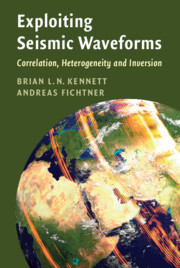Book contents
- Frontmatter
- Dedication
- Contents
- Preface
- 1 Introduction
- Part I Building the Seismic Wavefield
- Part II Correlation Wavefields
- 5 Correlations and Transfer Functions
- 6 Correlations and Interferometry
- 7 Correlations and Ambient Noise
- 8 Coda Correlations
- 9 Correlations in Receiver Studies
- Part III Interaction of Seismic Waves with Heterogeneity
- Part IV Inversion for Earth Structure
- Appendix Table of Notation
- Bibliography
- Index
8 - Coda Correlations
from Part II - Correlation Wavefields
Published online by Cambridge University Press: 16 November 2020
- Frontmatter
- Dedication
- Contents
- Preface
- 1 Introduction
- Part I Building the Seismic Wavefield
- Part II Correlation Wavefields
- 5 Correlations and Transfer Functions
- 6 Correlations and Interferometry
- 7 Correlations and Ambient Noise
- 8 Coda Correlations
- 9 Correlations in Receiver Studies
- Part III Interaction of Seismic Waves with Heterogeneity
- Part IV Inversion for Earth Structure
- Appendix Table of Notation
- Bibliography
- Index
Summary
The seismic signals from major events continue to propagate through the Earth for hours. Theapplication of correlations between seismic stations to these long codas extracts steeply travelling body waves as the main contributors to the correlation wavefield.The properties of the coda correlation depend on the differences between the seismic phases that are being correlated. As a result, the correlation wavefield of the coda emphasises seismic phases that are difficult to detect in direct excitation by a source and so can provide new information on internal structure, e.g., an improved estimate of the shear wavespeed in the inner core.
Information
- Type
- Chapter
- Information
- Exploiting Seismic WaveformsCorrelation, Heterogeneity and Inversion, pp. 179 - 199Publisher: Cambridge University PressPrint publication year: 2020
